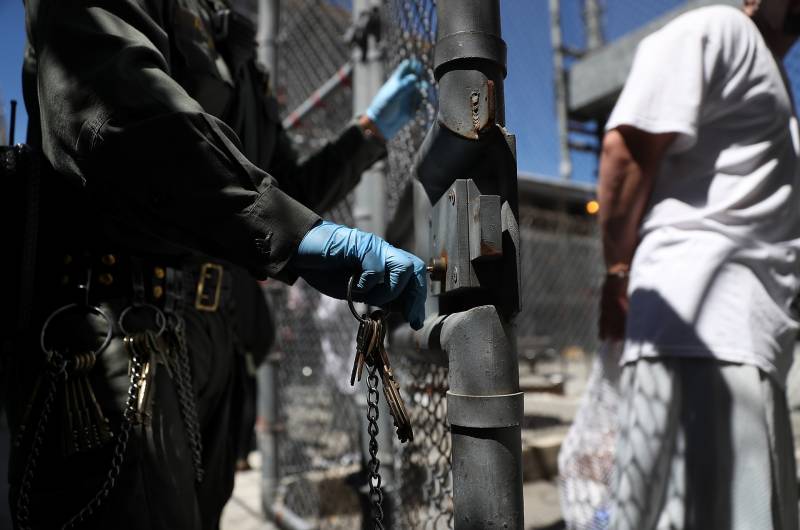New Jersey's Middlesex County Adult Correction Center has lowered the number of isolated inmates and the time they spend there, she said, but with a different approach that lets inmates out of their cells more frequently.
The Hampden County Correctional Center in Massachusetts increased its use of alternative sanctions and positive reinforcement. And Cook County, Illinois, no longer keeps troublesome inmates in isolation, allowing them to regularly spend time with about a half-dozen other inmates.
“There’s been a decades-long effort to reform solitary, especially in prisons. But what we haven’t seen is a paired reform effort for jails,” said Amy Fettig, director of the American Civil Liberty Union’s Stop Solitary campaign. “In Santa Clara what we’re seeing is an attempt to reform the whole process.”
Long-term isolation can be so debilitating, Fettig said, that she’s had clients cut themselves “just to feel something because they’ve become numb.”
Santa Clara County once had 400 inmates in solitary confinement. Specter’s client in Santa Clara County had been in solitary confinement for nearly five years.
By last fall there were about 40 inmates confined to isolation cells for an average of about two months, and just 26 by December.
Santa Clara County Sheriff Laurie Smith said she and many deputies were initially skeptical.
“It has surprised me, and I think it’s very, very good for our inmates,” she said. “I think what we’re doing is correct, and I think it’s working.”
Smith said she remains concerned that assaults on staff are up. She said the increase is logical, however, since inmates locked in their cells virtually around the clock have little opportunity to assault anyone.
Sgt. Todd Kendrick, president of the county's correctional officers association, attributed the increase to other less restrictive jail policies as well as the easing of solitary confinement. He and Smith both called for increased staffing.
Smith said the county fell into a pattern of protectively isolating inmates to separate purported gang members and those charged with murder and to safeguard jailhouse informants or sex offenders for fear they would be harmed. Officials sought to improve after several major incidents, including deaths in custody.
Like most jails, three-quarters or more of inmates had not been convicted of a crime and yet spent months and sometimes years awaiting trial in isolation. Under the new policy, “it’s really our philosophy to use that when it’s absolutely necessary, when there’s extraordinary risk,” Smith said.
Jail employees work to get inmates out of segregation as quickly as possible, often using a system in which inmates agree, in writing, not to assault each other.
One inmate refused for 1 1/2 years to leave solitary because he had testified against other gang members, recalled Capt. Thomas Duran, who coordinates the program.
But he saw other longtime inmates leaving segregation and eventually agreed to try it. Rather than put him immediately in with other inmates, deputies paired him with a single inmate — then two other inmates, then four and so on.
He spent more and more time out of his solitary cell until he was fully back into the general jail population.

